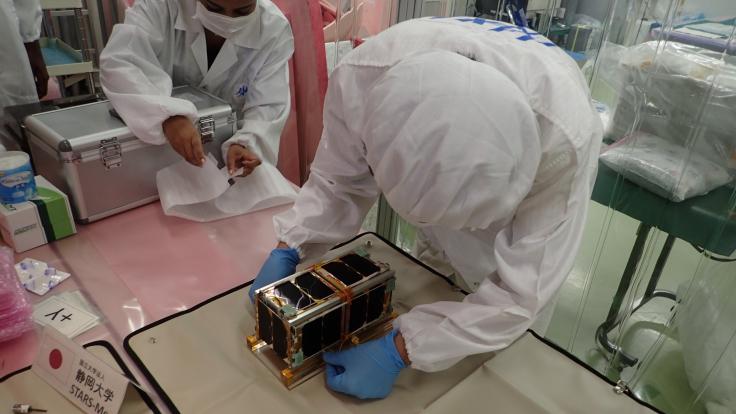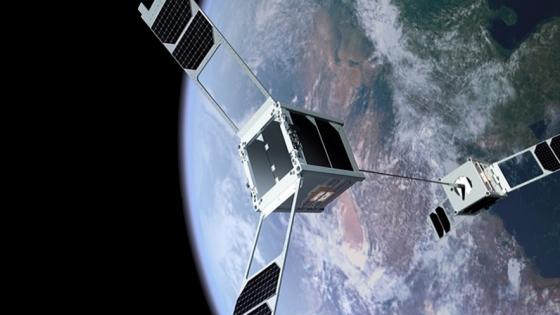The test will provide information to the engineers about how a bigger elevator could work in the space
The idea of placing a space elevator that allows us to raise any type of merchandise, ship or even fuel into the Earth's orbit has been in the heads of scientists since the year 1800. But until the last years, the idea has not begun to take shape thanks to small prototypes and models in three dimensions.
Finally, Japan has been the first country to put a space elevator in space. The prototype that has been placed in orbit is a scale model of what could be a large elevator.
The project is called STARS-Me (Space Tethered Autonomous Robotic Satellite - Mini Elevator) and has been developed by engineers from the Japanese University of Shizuoka.

Stars-Me engineers preparing the satellites
The prototype consists of two small cube-shaped satellites (10 centimeters per side) and a 10-meter-long ribbon that allows a miniature elevator to move between the ends of the cubes.
If successful, the project carried out by the Japanese could help verify the operation of this type of artifact in space and perhaps open the way for the development of space elevators on a natural scale.
How the space elevator works
Two satellites with cubic shape are sent attached to orbit. Once they are in orbit they will begin to communicate with the space station, indicating their correct positioning.
The space station will initialize the separation operation in which both satellites are separated by motors that will leave visible the cable that connects them.
When the cable is fully deployed, the lift can move from one of the satellites to another.



